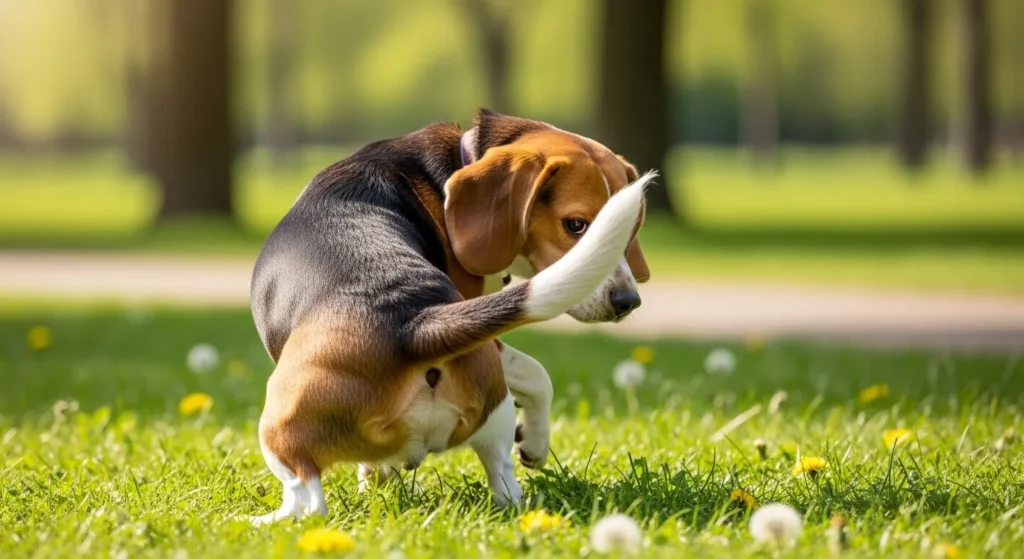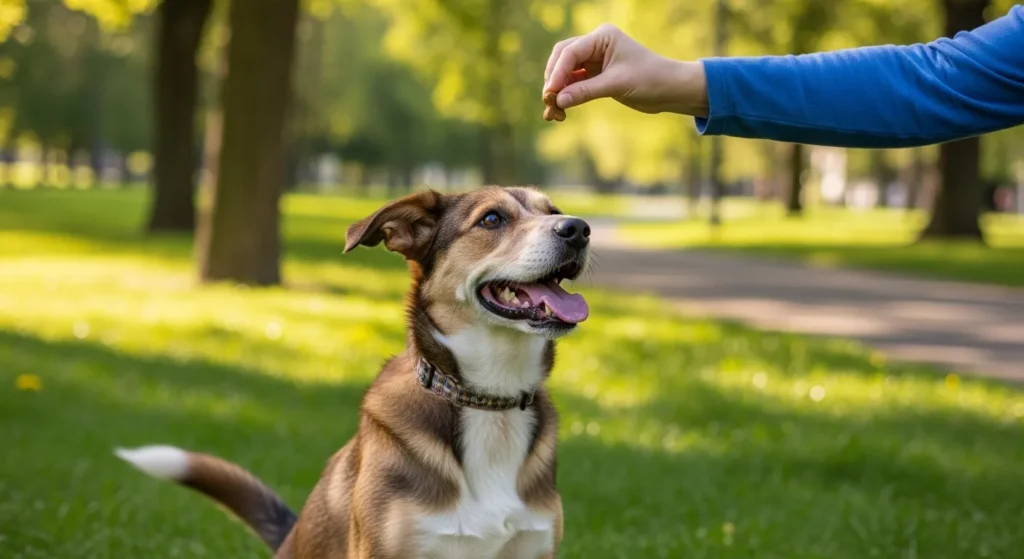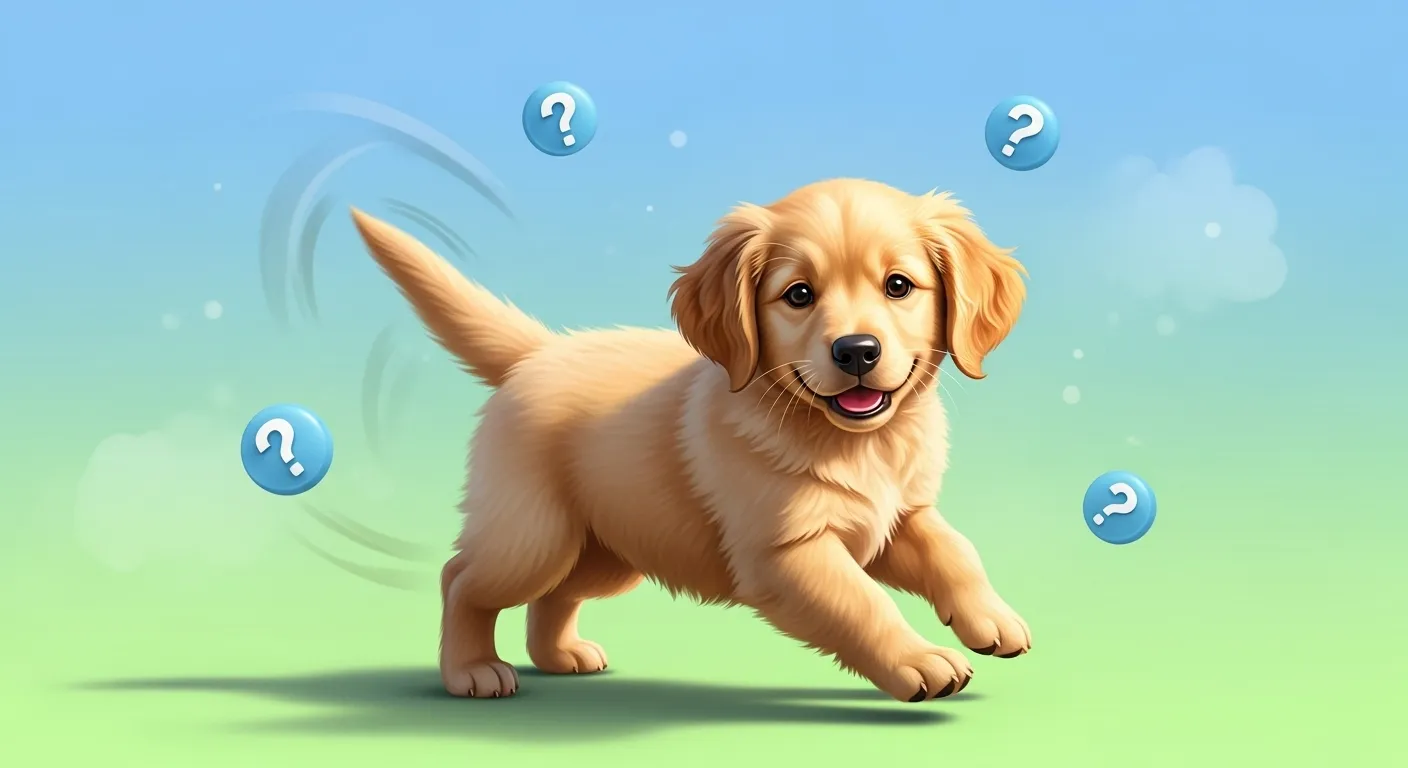Dogs chase their tails for many reasons. Some are harmless. Others point to health issues. This guide covers the main causes. It also tells you when to act. Read on to learn more about this common dog habit.
Common Reasons Dogs Chase Their Tails
Dogs show this behavior in different ways. Puppies often do it more than adult dogs. Here are the top causes based on vet advice.
Play and Curiosity
Young dogs see their tail as a new toy. They spin to catch it. This helps them learn about their body. Most puppies outgrow this phase by one year old.
Boredom and Lack of Activity
Dogs need daily walks and play. Without them, they get restless. Chasing their tail burns energy. It also passes time. Add more games to your routine to help.
Seeking Attention
Dogs notice when you react. If you laugh or talk to them, they repeat the action. Even a quick “stop” can encourage it. They learn it gets your focus.
Stress or Worry
Changes at home upset some dogs. Loud sounds or new people add tension. They chase their tail to calm down. Watch for other signs like hiding or whining.
Health Problems
Skin itch from fleas makes dogs bite their tail. Worms in the gut cause rear discomfort. Full anal glands lead to scooting and chasing. Injuries or allergies trigger this too. Check your dog’s coat and rear area often. Use our pet symptom checker to spot issues early.
Brain or Nerve Issues
Some dogs have repeat habits like people do. This is called canine compulsive disorder. It shows in constant spinning. Older dogs may do it from memory loss. Breeds like German Shepherds or Bull Terriers face this more.

When to Worry About Tail Chasing
Most tail chasing is fine if rare. But watch for red flags. If your dog spins all day, it harms their life. They may skip meals or play. Biting can cause wounds or infections. Sudden starts in adult dogs need a vet check. Track how often it happens. Note any blood or bald spots.
See a vet if chasing lasts over a week. Or if it comes with shakes or odd stares. Early help prevents worse problems. Link to related reads like why is my dog shaking for more signs.
How to Help Your Dog Stop Chasing Its Tail
You can guide your dog away from this. Start with simple steps. Always rule out health causes first.
Add More Exercise and Fun
Take longer walks each day. Use toys that make them think. Hide treats in puzzles. Play fetch instead of letting them spin. This meets their needs.
Ignore the Behavior
Do not react when they chase. Turn away. Reward calm sits with pets. They learn spinning gets nothing.
Train New Habits
Teach commands like “sit” or “fetch.” Use them to redirect. Practice daily. It builds better choices.
Fix Health Causes
Treat fleas with safe products. Empty anal glands at the vet. Switch food if allergies show. For worms, get regular checks. See can dogs eat broccoli for safe diet tips.
Get Pro Help
If steps fail, talk to a vet or trainer. They may suggest meds for repeat habits. Some dogs improve with routine changes.

Breeds More Likely to Chase Tails
Not all dogs do this the same. Some types show it often. Bull Terriers spin a lot. German Shepherds may from stress. Terriers like Jack Russells chase due to high drive. Use our pet breed finder quiz to match your lifestyle.
Studies from 2023 show genes play a part. One gene links to repeat actions in dogs. But any breed can chase if bored or sick.
Final Thoughts
Tail chasing seems funny at first. But it tells you about your dog’s needs. Keep them active and healthy. Watch for changes. This keeps your bond strong. For more on dog care, check common dog owner mistakes. Or try our pet age calculator to know their stage.
